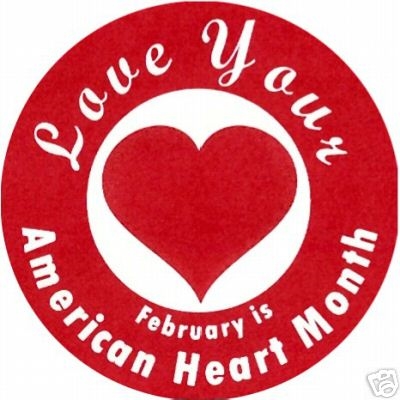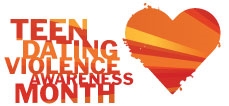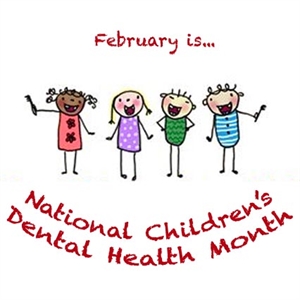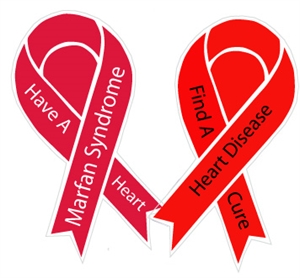American Heart Month on February, 2025: are these signs of a heart attack?
February, 2025 is American Heart Month 2025.
As an Amazon Associate I earn from qualifying purchases.

You be the judge. Here are the symptoms from the American Heart Association. All I will add is that they can go on for weeks / months ( if you live long enough) untreated causing more damage to your heart:
Heart Attack Warning Signs
Some heart attacks are sudden and intense — the "movie heart attack," where no one doubts what's happening. But most heart attacks start slowly, with mild pain or discomfort. Often people affected aren't sure what's wrong and wait too long before getting help. Here are signs that can mean a heart attack is happening:
Chest discomfort. Most heart attacks involve discomfort in the center of the chest that lasts more than a few minutes, or that goes away and comes back. It can feel like uncomfortable pressure, squeezing, fullness or pain.
Discomfort in other areas of the upper body. Symptoms can include pain or discomfort in one or both arms, the back, neck, jaw or stomach.
Shortness of breath with or without chest discomfort.
Other signs may include breaking out in a cold sweat, nausea or lightheadedness
As with men, women's most common heart attack symptom is chest pain or discomfort. But women are somewhat more likely than men to experience some of the other common symptoms, particularly shortness of breath, nausea/vomiting, and back or jaw pain.
Learn the signs, but remember this: Even if you're not sure it's a heart attack, have it checked out. Minutes matter! Fast action can save lives — maybe your own. Don’t wait more than five minutes to call 9-1-1.
Calling 9-1-1 is almost always the fastest way to get lifesaving treatment. Emergency medical services staff can begin treatment when they arrive — up to an hour sooner than if someone gets to the hospital by car. The staff are also trained to revive someone whose heart has stopped. Patients with chest pain who arrive by ambulance usually receive faster treatment at the hospital, too.
If you can't access the emergency medical services (EMS), have someone drive you to the hospital right away. If you're the one having symptoms, don't drive yourself, unless you have absolutely no other

Months represents and the colors?
I just listed the one's relating to very common dieases, and also by it's relevancy to your examples but there are more at my source. I hope this helps! :)
November - National Epilepsy Awareness Month (Purple)
Lung Cancer Awareness Month (Clear or Pearl)
National Novel Writing Month (Light Blue)
National American Indian & Alaska Native Heritage Month (None)
December - Political Correctness Awareness Month (None)
Safe Toys and Gifts Awareness Month (None)
January - Birth Defects Prevention Month (Pink and Blue)
Cervical Cancer Awareness Month (Teal)
February - African-American History Month (Red, Yellow, Green)
American Heart Month (Red)
Thyroid Disease Awareness Month (Light Blue)
March - Brain Injury Awareness Month (Green)
Colorectal Cancer Awareness Month (Blue)
Endometriosis Awareness Month (Yellow)
Women's History Month (None)
Greek-American Heritage Month (None)
Irish-American Heritage Month (None)
April - Alcohol Awareness Month (None)
Arab-American Heritage Month (None)
Autism Awareness Month (Red, Yellow, Blue, and Light Blue)
Cancer Control Month (None)
Child Abuse Prevention Month (Blue)
Sexual Assault Awareness Month (Teal)
May - Asian Pacific American Heritage Month (None)
Jewish American Heritage Month (None)
Brain Tumor Awareness Month (Grey)
June - AIDS Awareness Month (Red)
ALS Lou Gehrig’s Disease Awareness Month (None)
Gay and Lesbian Pride Month (Rainbow)
July - Eye Injury Prevention Month (None)
French-American Heritage Month (None)
Group B Strep Awareness Month (Light Blue, White, Light Pink)
August - Amblyopia Awareness Month (None)
Cataract Awareness Month (None)
Immunization Awareness Month (None)
Psoriasis Awareness Month (None)
Spinal Muscular Atrophy Awareness Month (Light Gold)

does anyone know the stats for coronary heart disease?
Prevalance of Coronary heart disease: estimated 13,200,000 in the USA 2001 (American Heart Association, 2004)
Prevalance Rate: approx 1 in 20 or 4.85% or 13.2 million people in USA [about data]
Incidence (annual) of Coronary heart disease: estimated 1.2 million new or recurrent coronary attacks in the USA 2004 (American Heart Association, 2004)
Incidence Rate: approx 1 in 226 or 0.44% or 1.2 million people in USA [about data]
Incidence extrapolations for USA for Coronary heart disease: 1,200,000 per year, 100,000 per month, 23,076 per week, 3,287 per day, 136 per hour, 2 per minute, 0 per second.
Prevalance of Coronary heart disease: Some 7 million Americans suffer from coronary heart disease (CHD), the most common form of heart disease. (Source: excerpt from NHLBI, coronary heart disease: NHLBI)
Prevelance statistics about Coronary heart disease: The following statistics relate to the prevalence of Coronary heart disease:
* 12,900,000 cases in the USA (National Health and Nutrition Examination Survey III, 1988-94)
* 12 to 13 million American adults have CHD (NHLBI)
* 7 million Americans with CHD (NHLBI)
* 228.4 per 100,000 white males in the USA 2001 (American Heart Association, 2004)
* 262.0 per 100,000 black males in the USA 2001 (American Heart Association, 2004)
* 1378.4 per 100,000 white females in the USA 2001 (American Heart Association, 2004)
* 176.7 per 100,000 black females in the USA 2001 (American Heart Association, 2004)
* Approximately 7 million in America (CBCF Health Organisation, 2004)
▲TopDeath and mortality statistics for Coronary heart disease:
Deaths from Coronary heart disease: 502,189 deaths in the USA 2001 (American Heart Association, 2004)
Death rate extrapolations for USA for Coronary heart disease: 502,188 per year, 41,849 per month, 9,657 per week, 1,375 per day, 57 per hour, 0 per minute, 0 per second.
Death statistics for Coronary heart disease: The following are statistics from various sources about deaths and Coronary heart disease:
* CHD single leading cause of death in the USA 2001 (American Heart Association, 2004)
* 529,659 deaths in 2000 (NHLBI)
* 481,458 deaths in 1994 (CDC-OC)
* Death rate declined by 26% in the USA from 1991-2001 (American Heart Association, 2004)
* 1 in 5 men die in the UK 2002 (The British Heart Foundation, 2004)
* 1 in 6 women die in the UK 2002 (The British Heart Foundation, 2004)
* 1 in 6 women die in the UK 2002 (The British Heart Foundation, 2004)
* 117,000 people died in the UK 2001 (The British Heart Foundation, 2004)
* Number 1 cause of death in the UK (The British Heart Foundation, 2004)
* Over 120,000 deaths each year in the UK (British Heart Foundation)
* Causes 1 in 4 male deaths each year in the UK (British Heart Foundation)
* Causes 1 in 6 female deaths each year in the UK (British Heart Foundation)
* 175.7 deaths per 100,000 men in Australia 2001 (Australian Institute of Health and Welfare, National Mortality Database, 2003)
* CHD is the most common cause of death in the European Union (British Heart Foundation - Coronary Heart Disease Statistics, 2003)
* Predicted 11.1 million deaths from CHD in 2020 (World Health Organization Web Site)
* More than 500,000 each year in America (CBCF Health Organisation, 2004)
* 73.8 per 100,000 population deaths from CHD for African American women in America (CBCF Health Organisation, 2004)
* 57.2 per 100,000 population deaths from CHD for American Indian/Alaskan Native women in America (CBCF Health Organisation, 2004)
* 42.9 per 100,000 population deaths from CHD for Asian/Pacific Island women in America (CBCF Health Organisation, 2004)
* 73.8 per 100,000 population deaths from CHD for Hispanic women in America (CBCF Health Organisation, 2004)
* Coronary heart disease was an underlying cause in 3.7% of female deaths from respiratory disease in Australia 1997-2002 (AIHW National Morbidity Database, Australia’s Health 2004, AIHW)
* Coronary heart disease was an underlying cause in 4.6% of male deaths from respiratory disease in Australia 1997-2002 (AIHW National Morbidity Database, Australia’s Health 2004, AIHW)
* Coronary heart disease was an underlying cause in 3.6% of female deaths from stroke in Australia 1997-2002 (AIHW National Morbidity Database, Australia’s Health 2004, AIHW)
* Coronary Heart Disease was an underlying cause in 2.6% of male deaths from stroke in Australia 1997-2002 (AIHW National Morbidity Database, Australia’s Health 2004, AIHW)
Deaths from Coronary heart disease: Coronary heart disease (CHD), also known as ischemic heart disease, is the most frequent cause of death in the United States -- accounting for 481,458 deaths in 1994. (Source: excerpt from Facts About Cardiovascular Disease: CDC-OC) ... CHD is the number one killer of both men and women in the U.S. Each year, more than 500,000 Americans die of heart attacks caused by CHD. (Source: excerpt from NHLBI, coronary heart disease: NHLBI)
▲TopSociety statistics for Coronary heart disease
Costs for Coronary heart disease: $111.8 billion with $58.2b direct, $8.4b morbidity, $45.b mortality (NHLBI 2002)
Cost statistics for Coronary heart disease: The following are statistics from various sources about costs and Coronary heart disease:
* Over 1.7 billion pounds per year in the UK (The British Heart Foundation, 2004)
* $894 million in direct health system costs in Australia 1993-94 (Australian Institute of Health and Welfare, 2003)
* $630 million in direct health system costs in Australia 1993-94 (Australian Institute of Health and Welfare, 2003)
* $1,572 million in hospital costs in Canada 1993 (Health Canada)
* $263 million in physician costs in Canada 1993 (Health Canada)
* $239 million in 1,565 costs in Canada 1993 (Health Canada)
* $2 million in research costs in Canada 1993 (Health Canada)
* $2,076 million in direct costs in Canada 1993 (Health Canada)
* $696 million in long-term disability costs in Canada 1993 (Health Canada)
* $4,595 million in mortality costs in Canada 1993 (Health Canada)
* $5,291 million in indirect costs in Canada 1993 (Health Canada)
* $7,784 million in Canada 1993 (Health Canada)
Hospitalizations for Coronary heart disease: 2,262,000 (NHLBI 1999)
Physician office visits for Coronary heart disease: 10,070,000 (NHLBI 1999) '
▲TopAbout statistics:
This page presents a variety of statistics about Coronary heart disease. The term 'prevalence' of Coronary heart disease usually refers to the estimated population of people who are managing Coronary heart disease at any given time. The term 'incidence' of Coronary heart disease refers to the annual diagnosis rate, or the number of new cases of Coronary heart disease diagnosed each year. Hence, these two statistics types can differ: a short-lived disease like flu can have high annual incidence but low prevalence, but a life-long disease like diabetes has a low annual incidence but high prevalence. For more information see about prevalence and incidence statistics.
Use the following link:



















